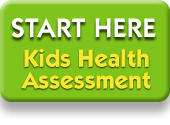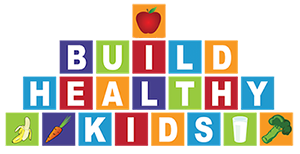| |

Lunch Planner
Healthy
Mornings
 Healthy Snacks
Healthy Snacks
Recipe
Club
Save
& Plan Tool
BMI
Calculator
|
|
Healthy
Snacks

Just like
a car needs gasoline to run well, our bodies need proper nutrition
to function optimally,
especially if it is growing and developing rapidly.
If you don’t put the right fuel in a car, eventually
it will stop working.
 If
you put only junk food in growing bodies, eventually they
will become unhealthy and overweight. For optimum health,
three meals plus two healthy snacks per day is necessary. If
you put only junk food in growing bodies, eventually they
will become unhealthy and overweight. For optimum health,
three meals plus two healthy snacks per day is necessary.
Snacking is important for children because
their smaller stomachs fill up fast and they burn energy quickly.
Between meals, snacks give their growing bodies the nutrients
and hydration they need.
Younger children will need a morning and afternoon snack.
The older school-aged child will not have the option to snack
between breakfastand lunch, but and can have a larger snack
after school.
As a rule, it is best to offer a vegetable or fruit as the
main snack item alongside some whole grain, milk, or protein
option.
Studies show that snacks contribute over
20% of the daily energy intake of children. The Institute
of Medicine Committee on Nutrition Standards for Foods in
Schools recommends that 9% of total calories for school age
children be devoted to snacks. Taking both of these into account,
it is best to limit each of the two snacks to 100 calories
each.

If your child needs more calories and eats
enough at meal times, you can offer more. If your child has
a weight issue, the fruit or vegetable will be enough. For
exact amounts, go to mypyramid.org or check with your physician
or nutritionist.
Snack time should not be perceived as a time to eat junk food;
cookies, cake, and chips for example. We can thank the advertisers
for most of the misinformation as to what makes a healthy
snack.
It is also easy for the busy parent to reach for these junk
food items as no preparation is needed and we know our children
will eat them.
Being prepared is very helpful; cutting up veggie sticks the
night before or making whole grain muffins and freezing them
on the weekends ensures that a healthful option is always
on hand. Keep fruit and vegetables washed and cut up so it
is easy for your child to help him/herself.
When it comes to salty, sweet or fatty options, limit the
amount you offer; try not to let your child take what they
want. Adults have a hard time limiting the amount of sweet
and savory snacks they eat so we should not expect our children
to restrain themselves either.
Children need to be taught what the right amount is for their
bodies. Remember, you are teaching them information about
healthy eating that they will have for the rest of their lives.
Don’t count on them to learn it outside the home.
Examples of healthful snack
items are listed below.
• Veggie sticks with hummus
• Yogurt topped with berries or favorite fruit
• Cheese stick and apple
• Tortilla chips with salsa
• Whole grain crackers with cut up veggies or fruit
• Veggie or fruit muffins made with whole grains
• 1⁄2 slice of banana bread with veggies
• Celery sticks plus 1 TBL nut butter
• Trail mix: Nuts, cereal, dried fruit, and/or chocolate
chips (watch the calories with the nuts)
• Fruit kebobs dipped in yogurt
• 1⁄2 slice of whole grain bread spread with 1⁄2
TBL sunflower seed butter (or other nut butters) and sliced
bananas or apples
• Smoothies: Mix in a blender milk (1⁄2 cup skim),
fruit (1⁄2 cup strawberries) and yogurt (2 oz). Kids
love them frozen, too.
Print out this list and have your child choose 1 item from
each column. Giving your child a sense of power over the selection
is important and goes a long way towards teaching them how
to eat healthfully.
Remember that you are teaching them a skill necessary to live
healthy lives.

SNACK = 1 FRUIT OR 1 VEGETABLE SERVING + 1⁄2 CUP MILK
OR 1 OZ MEAT/BEAN OR 1 OZ WHOLE GRAIN SERVING
|
FRUIT & VEGGIE |
GRAINS & MEAT |
| 1 small apple |
1⁄2 homemade whole grain muffin |
| 1⁄2 cup grapes |
1⁄2 slice banana bread |
| 1⁄2 cup blueberries |
10 baked light tortilla chips |
| 1⁄2 cup strawberries |
31 grams |
| 1 orange |
Eggplant |
| 1 peach |
29 grams |
| 1⁄2 cup cantaloupe
|
3 Nabisco Triscuit Crackers Baked Whole
Grain Original |
| 1⁄2 cup honeydew
melon1⁄2 cup honeydew melon |
6 Regular Whole Wheat crackers |
| 1/8-cup raisins |
Whole wheat bread 1 slice |
| 1 small pear |
Small 4” pita bread |
| 1 small banana (up to 6
inches) |
Other whole grain serving approximately
50 calories |
| 1⁄2 cup applesauce
unsweetened |
1⁄2 cup low fat or fat free milk
|
| 1⁄2 cup fruit cup
unsweetened |
1 oz low fat cheese stick or slice |
| 1⁄2 cup fruit cup
fruit juice sweetened |
1⁄2 plain nonfat yogurt (3 oz)
|
| 1⁄2 cup mandarin
oranges in fruit juice |
2 TBL hummus |
| 1⁄2 cup pineapple
slices without the juice |
1 boiled egg |
| 2 TBL hummus |
1⁄2 TBL nut butter |
| 1⁄2 cup raw carrots,
or baby carrots |
1 oz meat, 1 sandwich slice turkey
or ham |
| 1⁄2 cup chopped celery
|
1⁄2 cup low fat cottage cheese |
| 1⁄2 cup green or
red bell peppers |
Nuts: 8 almonds (56 calories) or 5
walnut halves |
1⁄2 cup broccoli
|
Other Meat/Bean serving approximately
50 calories |
| 1⁄2 cup cauliflower |
|
| 1⁄2 cup cucumber
|
|
| 1⁄2 cup green beans |
|
| 1⁄2 cup cherry tomatoes |
|
| 1⁄2 cup asparagus
spears |
|
| 1⁄4 cup salsa |
|

When selecting a snack item not on the list
use the guidelines set forth by The
Institute of Medicine Committee on Nutrition Standards for
Foods in Schools.
For foods, it includes only fruits, vegetables,
whole grains, nonfat and low- fat dairy or a combination product
as long as it has a serving of a fruit or vegetable in it.
Plus it must meet these specifications:
1. No more than 35% total calories from fat
2. Less than 10% of total calories from saturated fats
3. Zero trans fat (≤0.5 grams per serving)
4. 35% or less of calories from total sugar (exception yogurt,
no more than 30 g per 8 oz)
5. 200mg or less of sodium per portion as packaged
 |
Dr.
Deb's Bottom Line
|
 |
|
|
 |
Tips
|
 |
|
|

